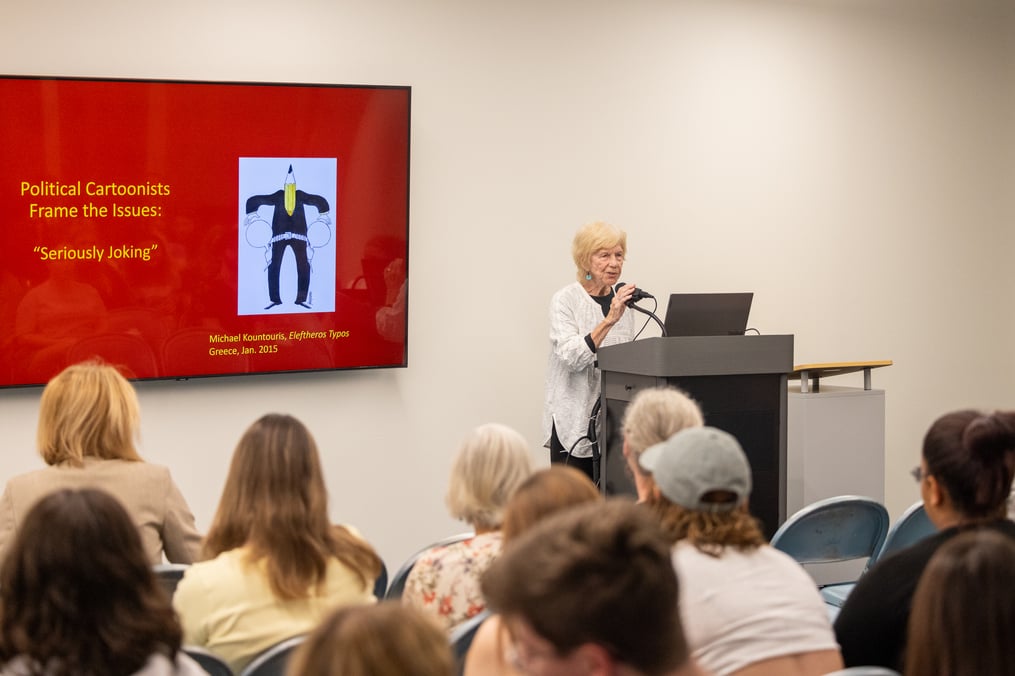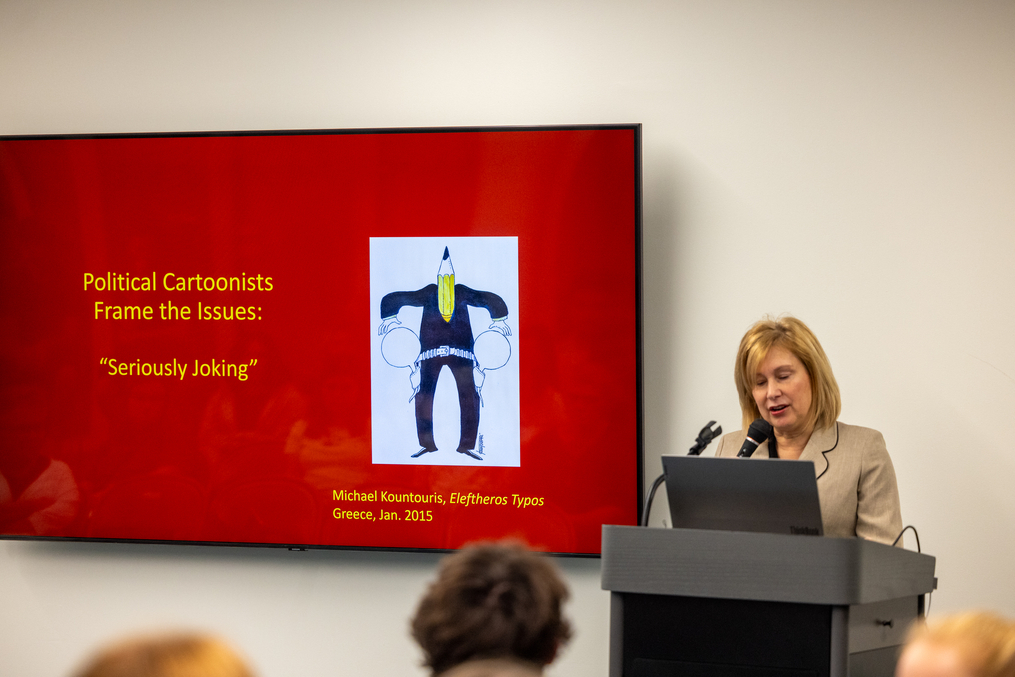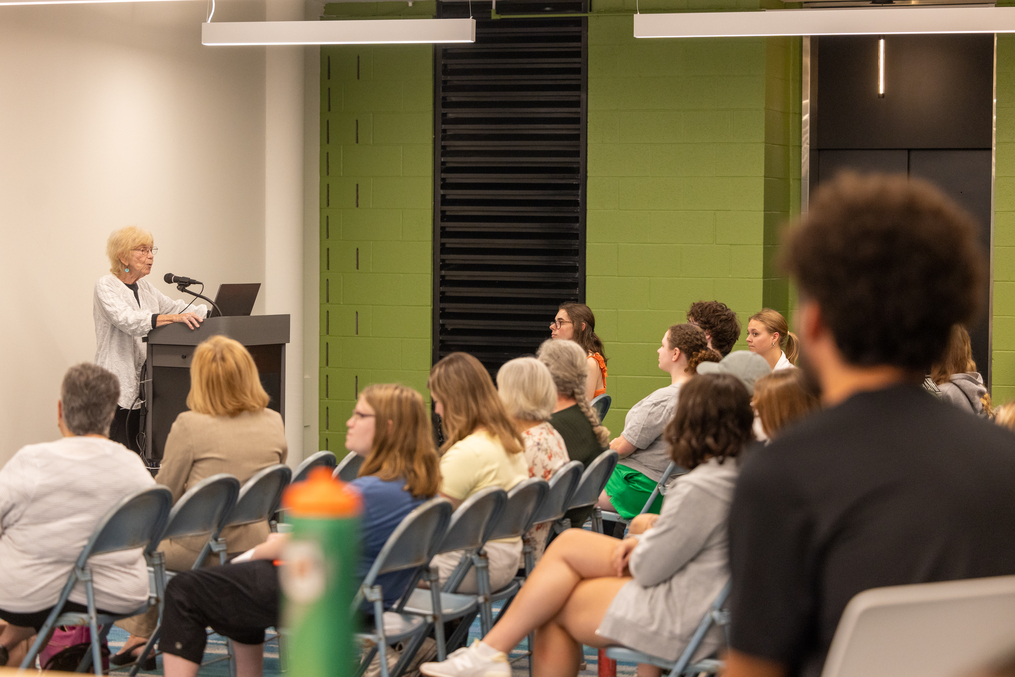An expert on editorial cartooning took a Keuka College audience on a wide-ranging exploration of the issues tackled, techniques employed, and reactions elicited by today’s political cartoonists.
“It’s an effective way to comment on serious issues,” Dr. Elaine K. Miller told a crowd of about 60 in Keuka College’s Lightner Library on Oct. 4. “People are much more likely to accept them if they come with humor.”
Through an hour-long presentation that included many examples of current cartooning, Dr. Miller outlined some of the issues being tackled today. Among them:
-The nation’s political divisions
-Border security and migration
-Gender issues
-Gun violence
-Academic freedom and related pushback
Among examples of the latter, a teacher was depicted writing the words “Critical Race Theory” on a chalkboard. A student asks, “You said we’re going to learn division today.” The teacher’s response: “We are.”
Dr. Miller highlighted the use of caricature, long a staple of editorial cartoonists, and pointed out the four principles for success. Caricatures, she said, must:
-Incorporate exaggeration,
-Be recognizable,
-Be consistent, and
-Capture the essence of a person or subject in such a way that the viewer immediately understands the point.
Recent examples of successful caricaturistic touchpoints cited by Dr. Miller included former President Barack Obama’s prominent ears and former President Donald Trump’s ever-present red tie.
A lifelong educator who specialized in Women’s Studies and Modern Languages, Dr. Miller said she first became interested in political cartoons during the 1984 presidential election, which saw New York Rep. Geraldine Ferraro became the first woman on a major party’s presidential ticket.
Dr. Miller interviewed the Democratic vice-presidential candidate for a program she presented at Berkley College, and asked her what she thought about being political cartoon fodder.
“It’s the last thing on my mind,” the lawmaker replied.
It stayed on Dr. Miller’s mind, however, and she went on to analyze how editorial cartoonists tackled gender issues with special emphasis on the treatment of former Secretary of State and 2016 presidential candidate Hillary Rodham Clinton – examples of which she shared.
She also pointed out the historic lack of women among political cartoonists, turning the audience’s attention to two noteworthy exceptions: Trailblazer Etta Hulme of the Fort Worth Star-Telegram, who, in 1978, became the first female cartoonist to be nationally syndicated, and the much-honored Signe Wilkinson of the Philadelphia Daily News, who, in 1992, became the first woman to win a Pulitzer Prize for editorial cartooning.
Dr. Miller said one of her favorite cartoons was one Wilkinson penned shortly before her 2020 retirement, in which she depicted representatives of different faiths standing arm-in-arm before various houses of worship to protect them from gun violence.
“There aren't enough armed guards to protect every church, synagogue, mosque, ashram, and temple around the world,” Dr. Miller quoted the cartoonist as saying. “It might be time for God’s children to learn to get along.”
That message reflects Dr. Miller’s belief that, among their other beneficial qualities, editorial cartoons are an excellent resource for learning.
















